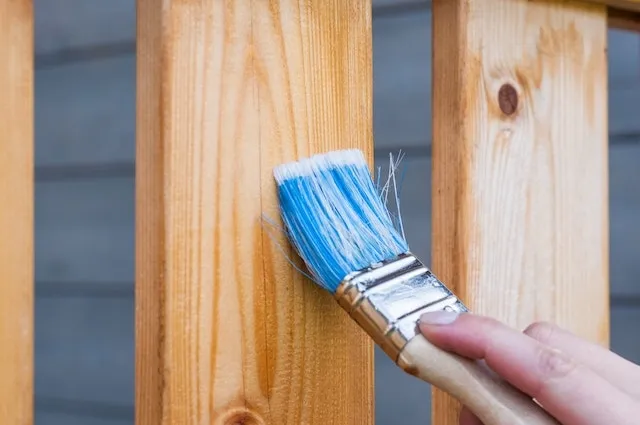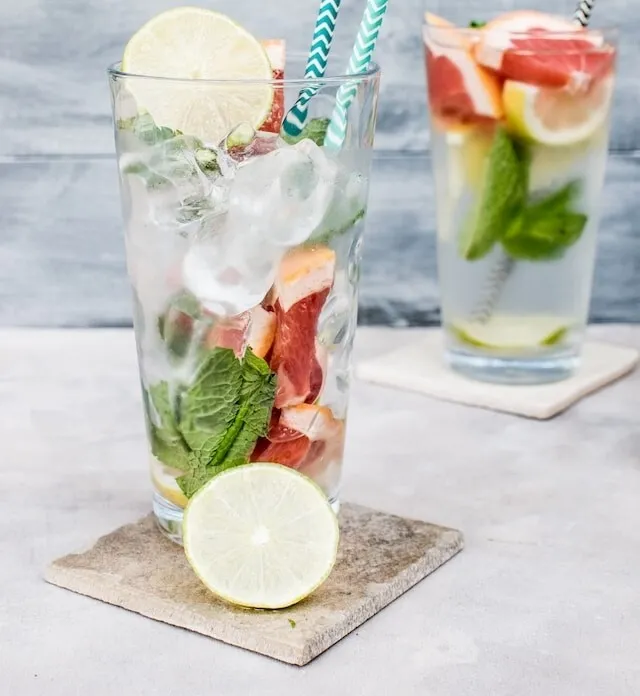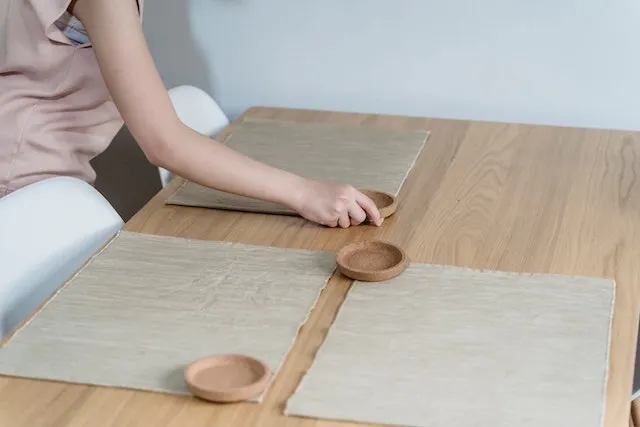How To Make Coasters Waterproof
A coaster is only as good as its ability to protect against moisture. Whether you’re making your own custom coasters or trying to improve existing ones, you need to know how to make coasters waterproof. In this blog post, we will delve into the processes and considerations of waterproofing coasters, helping elevate the protection they offer and also increase their durability. From choosing the right materials and sealants to learning the correct application techniques, we provide practical tips and suggestions to help you keep your coasters performing perfectly and looking their best. Join us in this journey to get the most out of your coasters.

Key Takeaways
- ItÔÇÖs important to ensure a coaster is clean and dry before applying any type of sealant.
- Different waterproof sealants are designed for use on different materials; popular options include polyurethane, acrylic spray and mod podge.
- Make sure you follow the manufacturer instructions for the application process of your sealant.
- If you are making your own custom coasters, optimize the design for waterproofing.
- You can ensure your custom coasters arrive with robust waterproofing when you order yours from us.
A Step-By-Step Guide For How To Seal Existing Coasters
To make your coasters waterproof, you must apply the appropriate finish for the material. Even if you have custom plastic coasters that are already waterproof, an extra sealant layer will make them more durable. You will need to clean the coasters and take extra care to obtain the right type of sealant for your material. You must also apply the sealant the correct way and consider options for additional protection. Let’s get into a more detailed explanation of the process.

Cleaning The Coasters
When you apply sealant to your existing coasters, you need to ensure there is no dust, debris, or residue on them. Not only would these things become trapped under the sealant, but they could also compromise its adhesion to the coaster and prevent it from offering maximum water resistance.
The material your coasters are made from will make a big difference in this process. For example, cleaning PVC coasters is different from how to clean cork coasters. You must engage in a cleaning method that is safe for the material, and you must allow it to air dry fully before thinking about applying the sealant.
In your cleaning process, try to avoid:
- Harsh chemical cleaners.
- Scrubbing with abrasive materials that might damage the surface.
- Leaving any residues on the coaster.
- Excessively rough handling.
Apply some common sense, and this is a simple process. Cleaning is an important first step in learning how to make coasters waterproof.
Choosing The Right Sealant
Your choice of sealant should depend entirely on the material your coasters are made from for DIY coaster waterproofing. Here are some sealant recommendations for common coaster materials:
- Wood coasters: A clear polyurethane or a varnish will work well. Shellac is another option. Water-based sealants have lower toxicity and odors compared to oil-based ones, but still provide a durable barrier.
- Cork coasters: Cork is an absorbent material, so a reliable sealant like water-based polyurethane is important to protect against liquid infiltration.
- Tile or stone coasters: A clear tile or stone sealer is all you should need for these. Such products are specifically designed to protect your personalized stone coasters against moisture and stains.
- Plastic or acrylic coasters: These materials are naturally waterproof. But a clear acrylic spray sealant could help provide an extra layer of protection.
- Ceramic coasters: A high-quality porcelain or ceramic sealer will offer the best protection.
There may be an element of personal preference in choosing the sealant for certain materials. But it is important that the product you choose is appropriate for making your coasters waterproof.
Incidentally, we supply custom coasters with an appropriate finish to maximize their water-resistance and durability so you don’t need to worry about this.
Application Process
Now that we have identified some common sealant types for different coaster materials, let’s look at how they are applied for DIY coaster waterproofing. Remember that your coasters need to be cleaned and dried first to prepare them for the sealant application.
- Polyurethane: Apply with a high-quality brush, foam brush, or foam applicator. Create a thin and even coat, following the direction of the wood grain. The drying time is often 24 hours or more.
- Varnish: Again, a high-quality brush is essential for application. You may wish to apply multiple coats, and should lightly sand in between coats if you do. The drying time is often 24 hours or more.
- Shellac: This can be applied with a clean cloth or a brush, aiming for a thin, even coat. Work quickly as shellac is fast-drying. Typically, it dries within 30 minutes, and you can apply additional coats as required.
- Tile or stone sealer: Apply a generous, even coat with an applicator brush or cloth. Check the manufacturer instructions for drying times; it’s usually a few hours or more.
- Porcelain or ceramic sealer: With an applicator brush, apply a generous, even coating to the coaster then wipe off any excess after waiting a few minutes for the sealer to absorb. A second coat may be recommended, then you will need to allow a drying time of several hours or more.
- Acrylic spray: Spray evenly from about 6-8 inches away from the coaster. Typical drying time is a few hours or more.
Additional Protection
Remembering what coasters are used for, the importance of maximum waterproofing is very clear. This is why some look for even more powerful methods for how to make their coasters waterproof. Here are two other chemicals that people explore to waterproof their coasters:
Chlorine bleach: This harsh chemical is not suitable for porous materials like wood or cork. Some people use it to clean their coasters before applying a sealant or other waterproofing agent, but this is not necessary.
Latex Waterproofing Compound: This is a chemical designed for specific applications, like sealing seams on fabrics or applying a protective layer on a roof. It is not really suitable for coasters as it is likely to leave an undesirable appearance and texture
Whilst some people look to these extreme chemicals, the correct sealants and finishes for your material are a far better option. They will provide the effective waterproofing you seek and also complement the aesthetic for the best results all round.

A Step-By-Step Guide To Making New Waterproof Coasters
Now we have explored the approaches for how to make existing coasters waterproof. Applying sealants to your coasters can enhance their visual appeal and improve their ability to protect tables and withstand wear and tear. But what about making new waterproof coasters from scratch?
In this section, we will look at some DIY coaster design ideas, choosing the right material, and steps you can take to make them waterproof. Again, the material of your coaster makes a big difference to this. Read on to learn the details.
Design Elements
If you are making your own custom coasters, you have a lot to think about. Just like with ordering from us, you must create a personalized design, but you also need to consider how suitable your design is for DIY coaster making. Ensuring your coaster will be waterproof is a fundamental priority, so you will need to design with a few things in mind:
- The properties of the coaster material.
- Which type of sealant will be compatible.
- How the coaster shape affects your ability to thoroughly apply a sealant.
- The process for making the coaster.
There are many guides out there for how to make a tea coaster, and each will have its own instructions for how to ensure longevity and aesthetic appeal. Creating your own coaster and choosing design elements can be an enjoyable and rewarding experience, but the more design elements you add, the more challenging it becomes to protect adequately.
You can sidestep all this difficulty by using our service. Design your custom coasters from us, and we will bring your design to life in vibrant detail with outstanding durability. And, no matter what material you choose, you can be confident in its water resistance.
Choosing A Base Material
There are various materials you can use for custom DIY coaster-making, and all have options for how to make them waterproof. Some materials are naturally water-resistant while others have good options for adding a waterproof finish. Here are some popular choices:
- Wood: These can be easily waterproofed with polyurethane or varnish, and offer fantastic versatility for custom coaster designs.
- Cork: With blank cork coaster bases, you can create some beautiful DIY designs and seal with water-based polyurethane for excellent water resistance.
- Tiles: These are popular for creating elegant coasters and can be treated with a clear tile sealer for maximum waterproofing.
- Plastic or acrylic: Naturally waterproof, you won’t need to treat these materials. But you could protect your custom designs by adding a clear acrylic spray sealant on top.
- Ceramic: Make your own elegant porcelain or ceramic coasters and add the appropriate sealer to protect your design when finished.
The base material sets the foundation for how to make waterproof coasters. There are many materials to create beautiful designs and diverse methods to waterproof them.
Waterproofing Solutions For New Coasters
We have talked about a number of waterproofing solutions in our previous section on how to make existing coasters waterproof. When you are making your own coasters from scratch, you can use many of the same products. But here are two particularly popular sealants the crafters use for their DIY coaster waterproofing:
- Mod Podge: The outdoor formula of this adhesive sealant is best for waterproofing. Apply to your clean, dry coaster with a soft brush in a thin, even coating to lock in your design and create a protective, waterproof layer.
- Acrylic spray: We already mentioned this, but it is a popular choice among crafters. Spray all over the exterior of your completed DIY coaster for a reliable glossy waterproof finish. You could even use it in combination with mod podge for maximum protection.
Once you have created your new custom coaster, take the necessary steps to protect your design and preserve the longevity of your creation. When you order custom coasters from us, you can rest assured we have taken every measure to maximize their longevity.
Want a personalized coaster that is already waterproof?
Our custom ceramic coasters have your bespoke design printed on them and they are finished with a waterproof sealant that ensures no water ever penetrates the surface.
Materials And Tools Needed For Waterproofing Coasters
The materials and tools you need for waterproofing coasters should be gathered before you begin the process. It's essential to protect your work surface, and always apply the sealants in a well-ventilated area. Here are some other important items to have:
- Protective gloves and an apron.
- A high-quality brush, foam applicator, or cloth, depending on the sealant.
- Light, non-coarse sandpaper for sanding in between coats.
- An extra cloth to wipe away excess.
- A safe, dry space away from direct sunlight to let the sealant dry.
The specific tools from this list that you'll need depend on the sealant you are using. Be sure to pay close attention to the manufacturer's instructions once you've chosen your solution to make your coasters waterproof.

How Do You Seal Fabric Coasters?
One of the benefits of fabric coasters is that they are absorbent, and they are easy to wash. However, you may want to make yours waterproof to increase their longevity. To do it, you will need a clear, spray-on sealant or a gel/adhesive type that creates a protective barrier.
Consider using:
- A clear fabric sealant.
- Fabric waterproofing spray.
- Mod podge.
Bear in mind that applying any of these sealants is likely to affect the texture of your coasters and also reduce their softness and flexibility.
Create waterproof coasters without the DIY effort
Work with us to create custom resin photo coasters for a waterproof solution that contains your cherished photograph for daily use or table settings at family gatherings.
Start creating hereWhat Do You Seal Coasters With?
We have discussed a number of potential solutions for how to make coasters waterproof. Here’s a recap:
- Polyurethane: Great for wood or cork.
- Varnish: Ideal for wood coasters.
- Shellac: A fast-drying option for wood coasters.
- Tile or stone sealer: An optimal solution for tile or stone coasters.
- Porcelain or ceramic sealer: Required for DIY waterproofing ceramic coasters.
- Acrylic spray: A versatile solution that can be used on many materials.
- Mod podge: A popular crafting product that can create a waterproof seal for various materials.
Frequently Asked Questions About How To Make Coasters Waterproof
How Do You Seal Fabric Coasters?
Fabric coasters are typically sealed with spray-on sealants to make them waterproof. There are certain solutions designed for fabric, but they will impact your coaster’s texture.
What Do You Seal Coasters With?
Coasters must be sealed with a product suitable for their material. Popular options include polyurethane, varnish, shellac, acrylic spray, and mod podge.